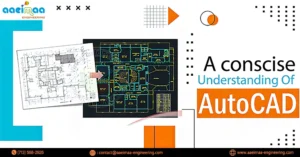It is not only advantageous but also essential to keep ahead of the curve in the fast-paced world of construction and design. Virtual Design and Construction (VDC) and Building Information Modelling (BIM) have become revolutionary technologies that are changing the way we conceptualize, plan, and carry out building projects. Demand for qualified individuals with BIM and VDC experience is soaring as the business develops. A new age of specialized training and certification programs that address the unique requirements of the digitally driven construction industry has resulted from this.
Decoding BIM and VDC
BIM: Beyond Blueprints, Into the Future
Before the first brick is set, picture yourself creating a building in a virtual environment. BIM is all about that. Not only is it a design tool, but it’s also a platform for collaboration that unites builders, engineers, and architects in a common digital environment. Not limited to drawings, BIM is a live 3D model that is brimming with information, encompassing everything from the smallest bolt to the most complex design elements.
VDC: Crafting Tomorrow’s Reality Today
VDC transforms the BIM idea into an effective project management tool. It is comparable to having a crystal ball for building projects. Using the BIM-created virtual model, VDC anticipates problems, streamlines workflows, and guarantees a more seamless transition from design to implementation. It serves as a digital compass to help teams navigate the challenges of construction.
Why Certification and Training Matter
Staying Relevant in a Digital Landscape
In order to remain relevant, experts in the construction business must adjust to the digital transition that is taking place. Programs for BIM and VDC certification provide an organized manner for people to get the skills and information they need to successfully traverse this new era. These programs give professionals in the construction industry, such as architects, engineers, project managers, and others, a competitive edge in a work market that is increasingly driven by technology.
Meeting Industry Standards
Professionals that participate in certification programs are guaranteed to follow industry norms and best practices. They verify that a candidate is competent in utilizing BIM and VDC tools, comprehending collaborative workflows, and successfully putting these technologies into practice. Employers are reassured that their teams have the newest capabilities when employees do this, in addition to increasing the person’s trustworthiness.
Top Certification and Training Programs
1. Autodesk Certified Professional: BIM Specialist
Autodesk, a global leader in 3D design and engineering software, offers a comprehensive BIM certification program. The certification covers essential BIM concepts and hands-on experience with Autodesk tools like Revit and AutoCAD.
2. AIA Certificate in Advanced BIM
Advanced BIM abilities are the topic of a certificate program offered by the American Institute of Architects (AIA). It explores subjects including energy analysis, parametric design, and working together using BIM technologies.
3. Stanford Advanced Project Management Certificate: VDC Specialization
The Advanced Project Management Certificate program at Stanford University offers a VDC concentration track for individuals who wish to focus in this area. The course covers a variety of subjects, including collaborative project management, clash detection, and 4D scheduling.
4. AGC Certificate of Management-Building Information Modeling (CM-BIM)
The CM-BIM certification is provided by the Associated General Contractors of America (AGC), which highlights the use of BIM in construction project management. It addresses issues including better project communication, cost estimation, and risk minimization.
The Future of Construction is Digital
The use of BIM and VDC is becoming more and more essential as building projects grow more intricate and networked. The pathways that link professionals to the digital construction of the future are certification and training programs. Investing in these programs can help you become a leader in a field that is changing through technology, regardless of how experienced you are as an architect or how just graduated you are.
Those that use BIM and VDC in the rapidly changing construction industry are not only creating buildings; they are influencing the direction of a whole sector. Put on your virtual reality goggles, explore the world of BIM and VDC, and get ready to build an innovative future that has no bounds.




